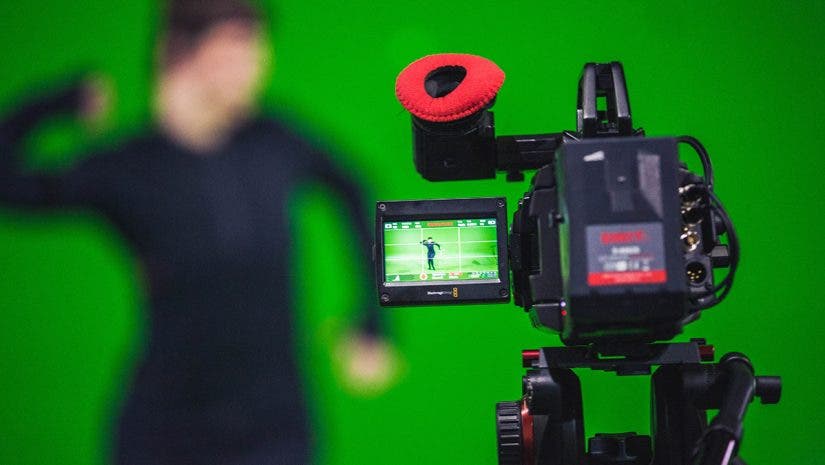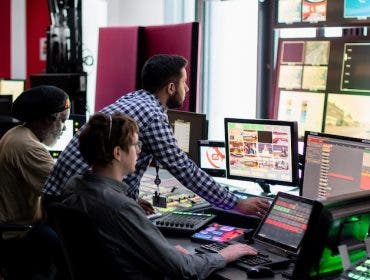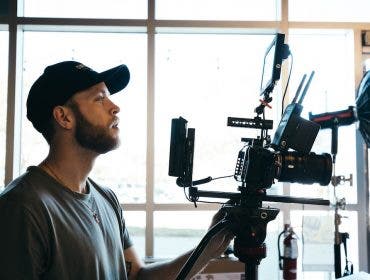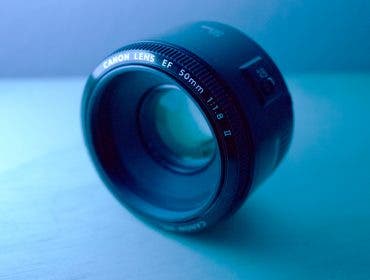When it comes to keeping your options open in post-production, nothing is better than shooting photos and video against a green screen or blue screen. Interested in understanding the differences between blue screen vs green screen? Read on.
Also known as chroma key backgrounds, green screen or blue screen backdrops make it easy for filmmakers and photographers to replace the background with virtually any image or video footage they can imagine. They allow you to place actors in a bustling New York City street, in the middle of a haunted house, or on the surface of the moon through the use of visual effects.
Using blue backgrounds and bright green-screen backgrounds is common in Hollywood. But, what exactly are the differences between blue screen vs green screens, and how do they work?
How Chroma Key Compositing Works
Chroma key compositing, or chroma keying, is a popular video production technique that simplifies the process of incorporating special effects like CGI, background swapping, and other VFX in the post-production process. In this technique, a solid-color background is digitally replaced with alternative backgrounds or footage.
As more and more movie buffs become aware of chroma keying in superhero movies, action films, and other types of filmmaking, the most commonly seen example of chroma-key compositing is actually weather forecasting. If you’ve ever seen a meteorologist standing in front of a local map, tracking a weather front, you’ve seen chroma-key compositing in action.
The most important thing to remember about chroma-key technology is that the chroma-key color will be replaced digitally whenever it appears on camera. For example, if a news anchor is wearing a green sweater in front of a green screen, her sweater will also be digitally affected in post production.
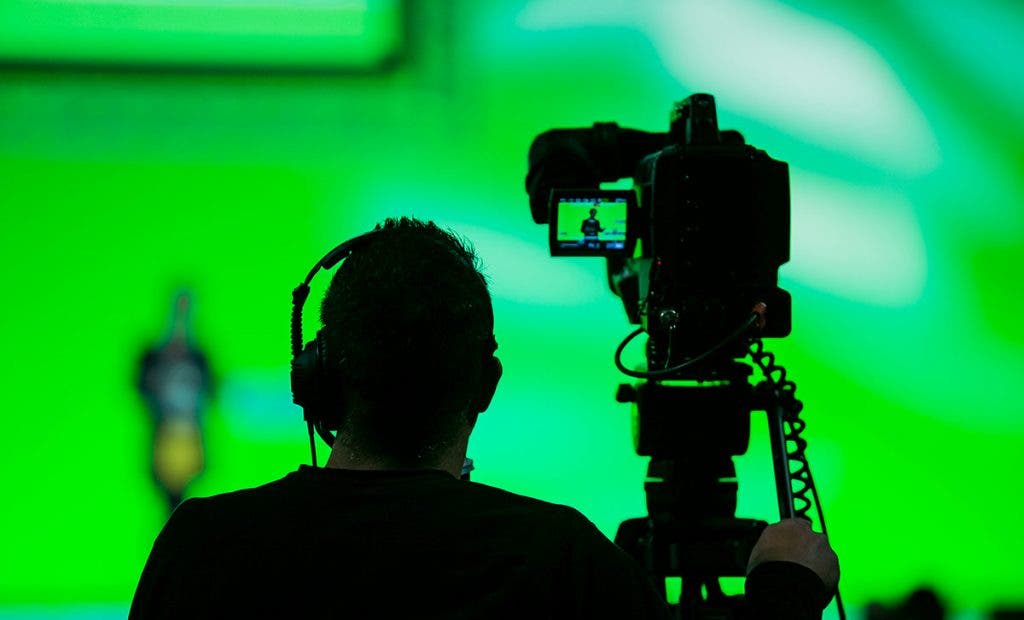
Blue Screen vs Green Screen: When is One Color Preferable Over the Other?
Even though blue screens and green screens work in a similar way, they’re not entirely interchangeable. There are certain situations where one is a better choice than the other.
Color Luminosity
Green screens have more luminance than blue screens. In other words, the color green used in green screens is slightly brighter than the color blue found in blue screens.
If you’re filming night scenes, the luminance of blue screens is preferable because there will be less light bouncing around and potentially causing problems. The extra luminance in green screens can be helpful for daytime scenes.
The green luminance can result in some color spill on some surfaces and textures like blonde hair, which we’ll address in more depth next.
Color Fringing and Spill
One of the major considerations when using any screen color is color spill or color fringing around the edges of your subject. Not only will any reflective surfaces on set reflect the color of your background, but sometimes the subject will suffer from a color fringing effect on their hair, clothing, and skin.
Many production designers prepare for this concern by using matte surfaces and treatments on all set pieces, props, and costumes to help avoid reflections. Blue screens generally have less color spill than green screens. If you’re working with a green screen, and color spill is a consistent problem, you may want to use blue screens instead.
Digital Cameras vs Film Cameras
In most cases, it’s wise to use a green screen if you’re filming with a digital camera. The technology found in digital camera sensors is more adept at capturing the color green with precision. That’s why most modern movie productions use green screens.
Skin Tones
Both blue and green are ideal colors to use in chroma keying because they don’t appear in most human skin tones. That said, if a subject’s skin has blue or green undertones and you notice you’re having issues with the color of shadows, fringing, or bounce on a subject’s skin tone, you may need to swap background colors.
Scenery, Costumes, and Other Sources of On-screen Color
If you go into production knowing that you’ll use chroma-key technology, you should let the production designers know about your plans from the start. They will take care to avoid using bright shades of blue or green in the costuming, scenery, and props.
If you know ahead of time that a character needs to have a bright blue costume, then it’s a good idea to plan to use a green screen or vice versa.
